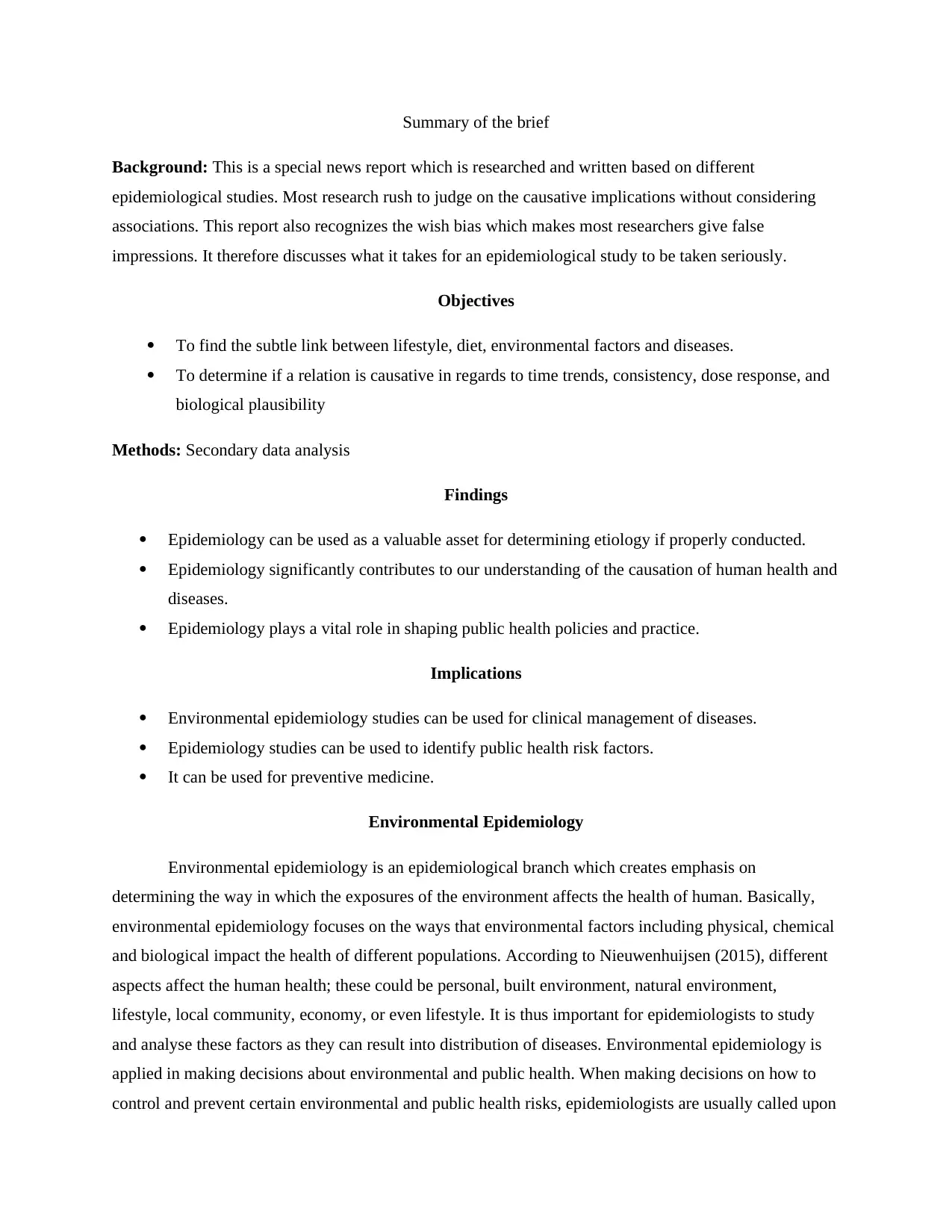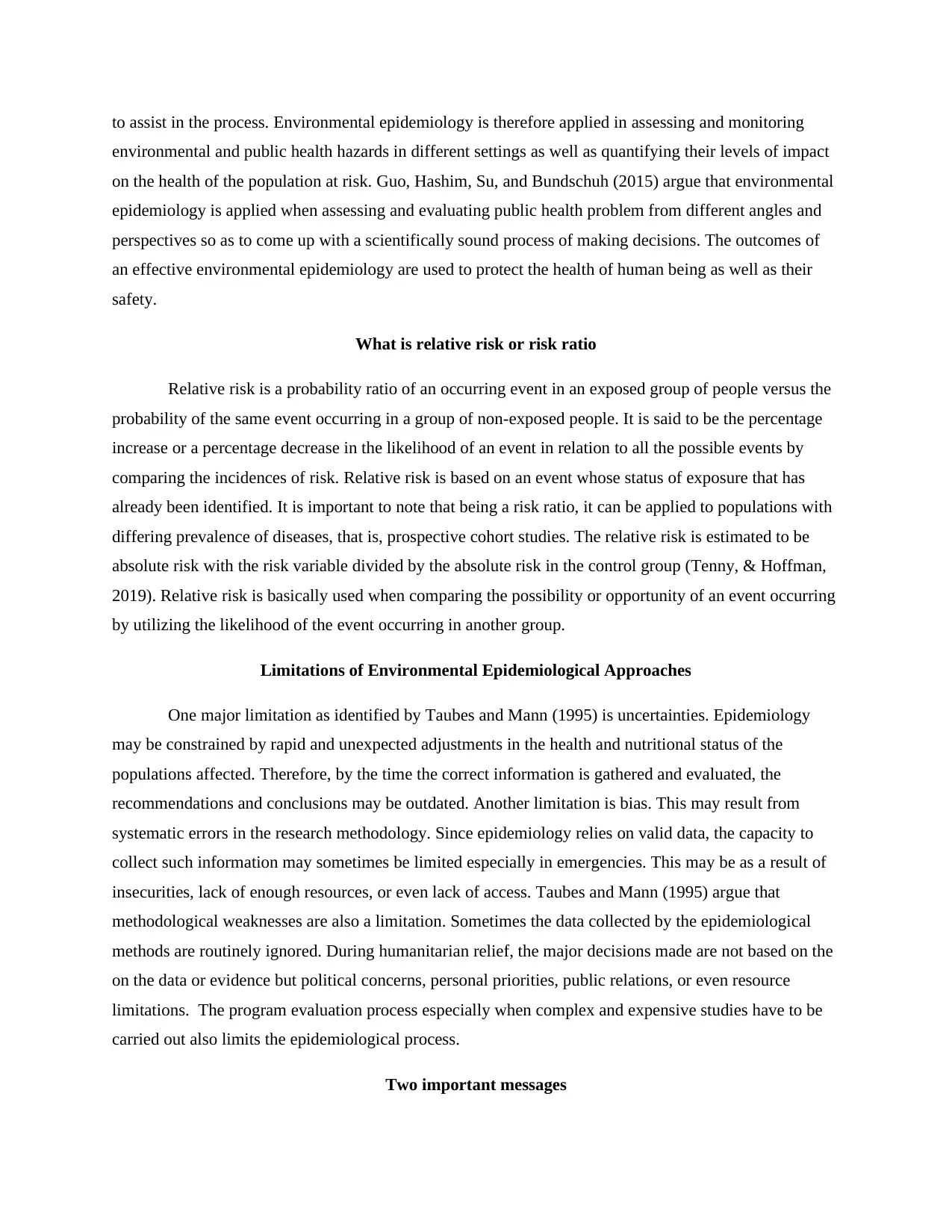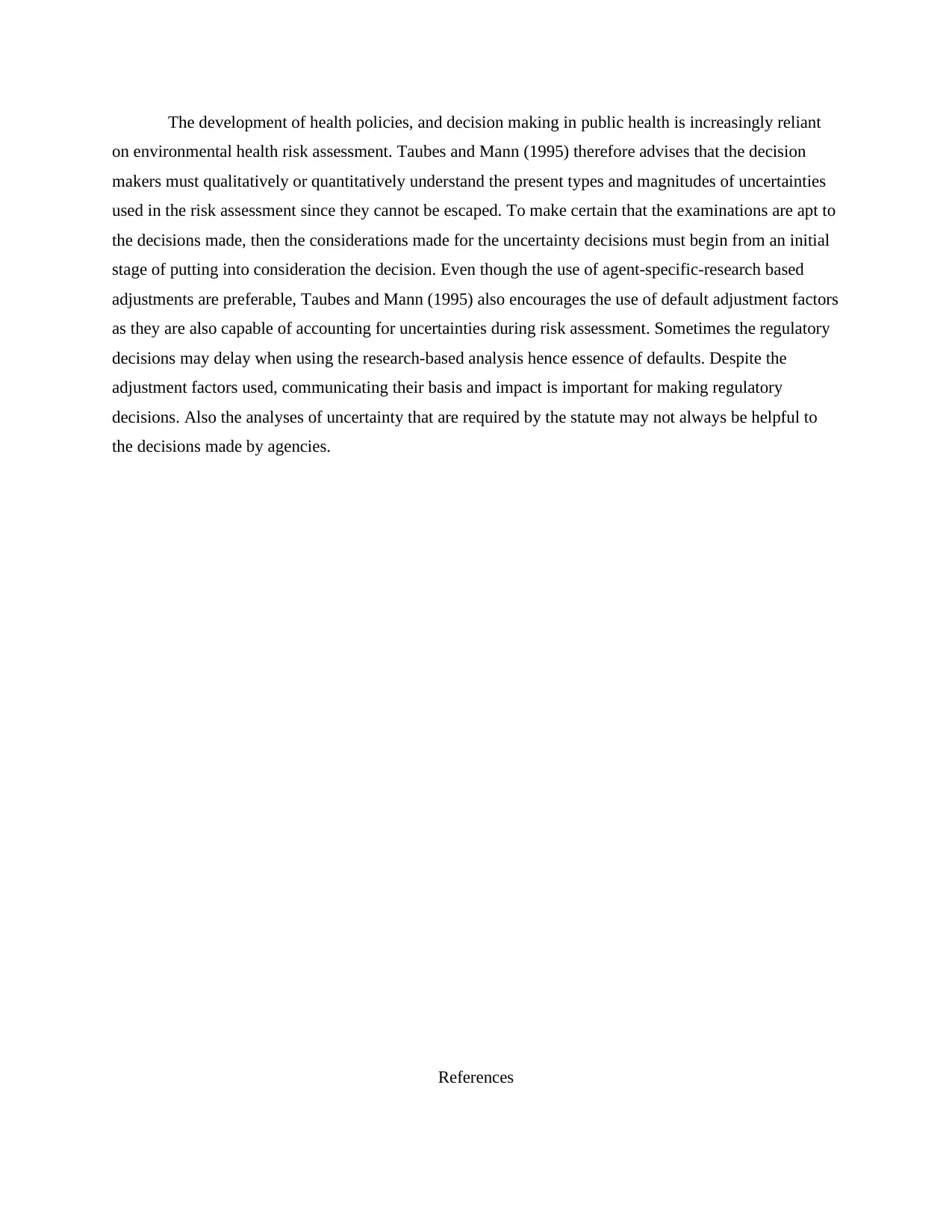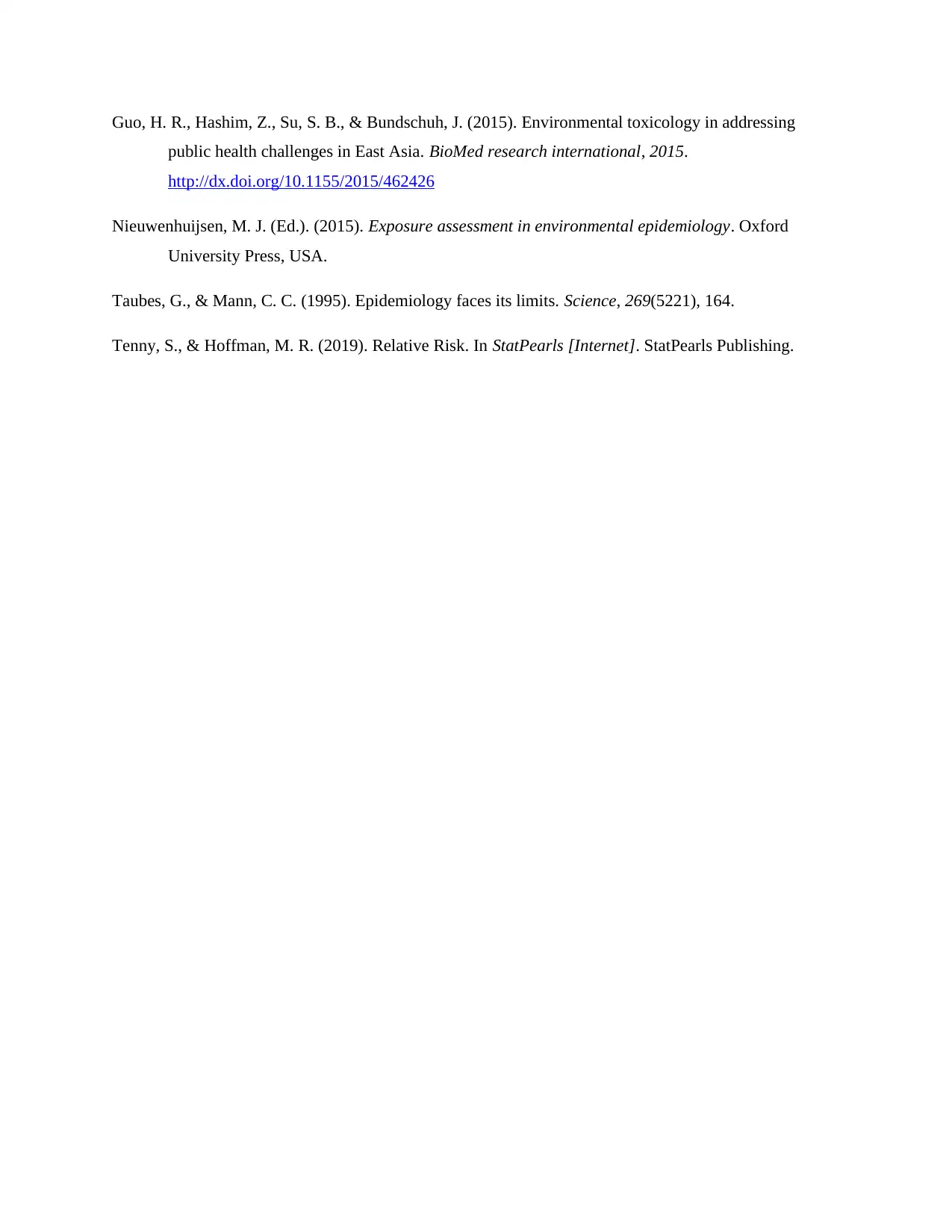Comprehensive Report on Environmental Epidemiology and Public Health
VerifiedAdded on 2022/10/19
|4
|1116
|11
Report
AI Summary
This report provides an overview of environmental epidemiology, emphasizing its significance in determining the etiology of diseases and its role in shaping public health policies. It explores the subtle links between lifestyle, diet, environmental factors, and diseases, highlighting the importance of considering time trends, consistency, dose response, and biological plausibility in epidemiological studies. The report discusses the application of environmental epidemiology in clinical management, identifying public health risk factors, and preventive medicine. It defines relative risk and risk ratio, explaining their use in comparing the likelihood of events between exposed and non-exposed groups. Furthermore, the report addresses the limitations of environmental epidemiological approaches, such as uncertainties, biases, and methodological weaknesses, while also emphasizing the development of health policies and decision-making in public health relies on environmental health risk assessment. The report also highlights the importance of understanding uncertainties and using both research-based and default adjustment factors in risk assessment, ultimately aiming to protect human health and safety.
1 out of 4










![[object Object]](/_next/static/media/star-bottom.7253800d.svg)